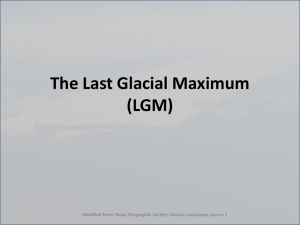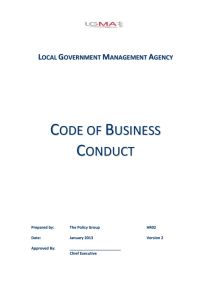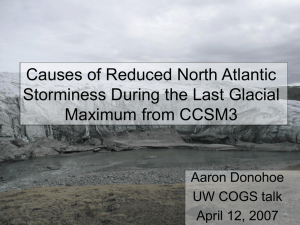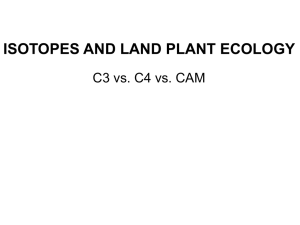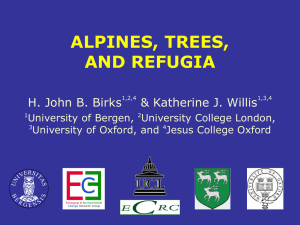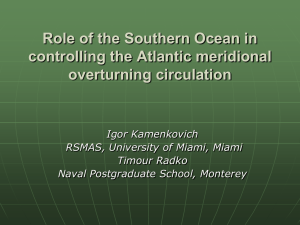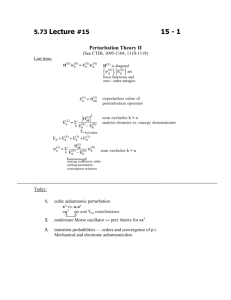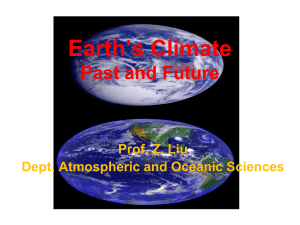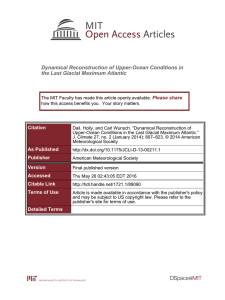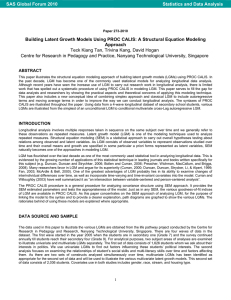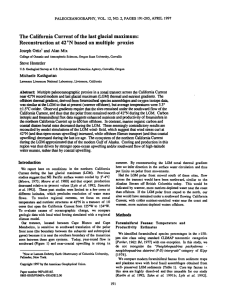Readme
advertisement
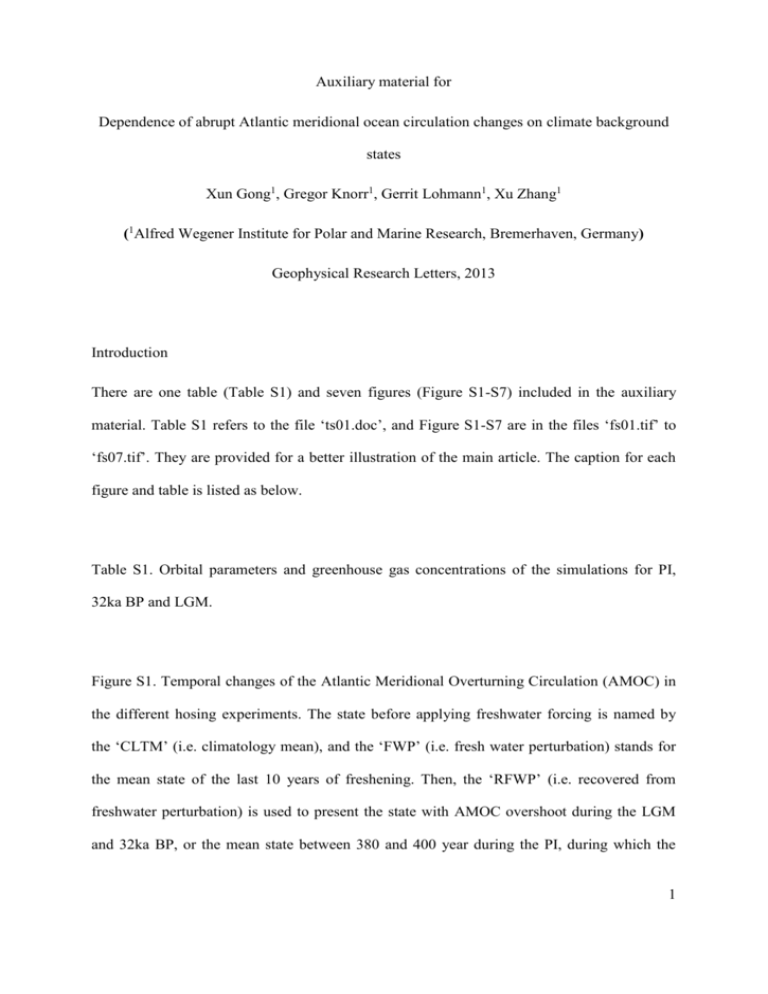
Auxiliary material for Dependence of abrupt Atlantic meridional ocean circulation changes on climate background states Xun Gong1, Gregor Knorr1, Gerrit Lohmann1, Xu Zhang1 (1Alfred Wegener Institute for Polar and Marine Research, Bremerhaven, Germany) Geophysical Research Letters, 2013 Introduction There are one table (Table S1) and seven figures (Figure S1-S7) included in the auxiliary material. Table S1 refers to the file ‘ts01.doc’, and Figure S1-S7 are in the files ‘fs01.tif’ to ‘fs07.tif’. They are provided for a better illustration of the main article. The caption for each figure and table is listed as below. Table S1. Orbital parameters and greenhouse gas concentrations of the simulations for PI, 32ka BP and LGM. Figure S1. Temporal changes of the Atlantic Meridional Overturning Circulation (AMOC) in the different hosing experiments. The state before applying freshwater forcing is named by the ‘CLTM’ (i.e. climatology mean), and the ‘FWP’ (i.e. fresh water perturbation) stands for the mean state of the last 10 years of freshening. Then, the ‘RFWP’ (i.e. recovered from freshwater perturbation) is used to present the state with AMOC overshoot during the LGM and 32ka BP, or the mean state between 380 and 400 year during the PI, during which the 1 AMOC has completely recovered. Using the same version of COSMOS model, Zhang et al. [2012] recently has done a series of experiments to explain that the similarity of AMOC strength between the LGM and PI experiments are determined by the conditions of salinity stratifications in the deep Atlantic Ocean. Furthermore, as shown in Figure S5, there is a stronger heat losing from ocean to atmosphere under 32ka BP conditions, which thermodynamically enhances surface ocean water sinking into deeper layer, and ultimately induces a stronger AMOC strength than in the LGM experiment. Figure S2. The annul mean mixed layer depth (AMMLD) in the North Atlantic before applying the freshwater perturbation (left column, 21-100 model year mean), and twenty years after the end of freshwater perturbation (right column, 265-275 model year mean) under the conditions of (a, b) PI, (c, d) 32ka BP and (e, f) LGM. In panel (e), three boxes indicate the areas of deep-water formation in the South Labrador Sea (red), the GIN Sea (black) and the South-Icelandic Sea (yellow), respectively. Figure S3. The winter mean mixed layer depth in the North Atlantic before applying the freshwater perturbation and twenty years after the end of freshwater perturbation under the conditions of PI, 32ka BP and LGM. The subfigures are shown in accordance with the order of Figure S2. Figure S4. The anomaly of sea surface temperature between the states of ‘RFWP’ and ‘FWP’. From top to bottom, it is shown for the experiments PI, 32ka BP and LGM, respectively. 2 Figure S5. The anomaly of temperature between different states in the freshening experiments. The left column shows the difference between the states of ‘CLTM’ and ‘FWP’, and the right exhibits the anomaly between the states of ‘RFWP’ and ‘FWP’. From top to bottom, it is shown for the experiments PI, 32ka BP and LGM, respectively. Figure S6. The anomaly of salinity between different states in the freshening experiments, which are shown in accordance with the order of Figure S5. Figure S7. The anomaly of annual mean total heat flux between 32ka BP and LGM experiment. The bluish colors indicate that there is more heat loss from ocean to atmosphere under 32ka BP conditions, relative to LGM. In addition, the lines exhibit 15% sea ice compactness lines during 32ka BP (black) and LGM (yellow), respectively (winter: thick, summer: thin). The region in grey means the land in the LGM run. Figure S8. Time series of the AMMLD in the South Labrador Sea in the experiments of (a) PI, (b) 32ka and (c) LGM. The blue and orange columns indicate the time phases of AMOC overshoot in the experiment of 32ka BP and LGM, respectively. 3

